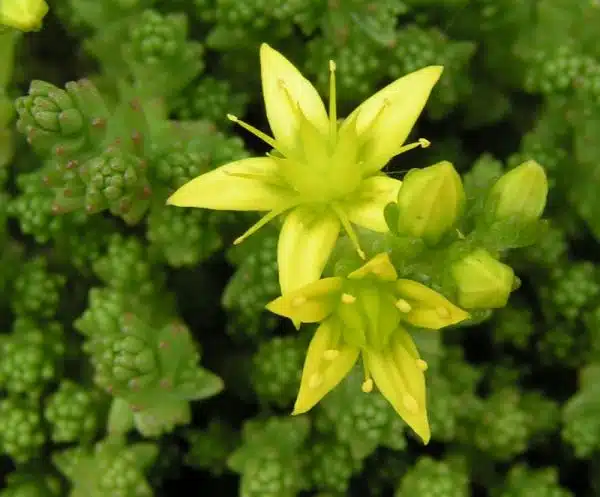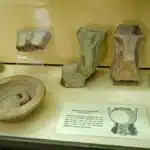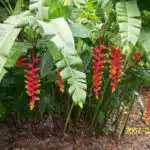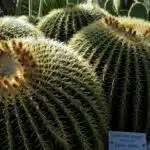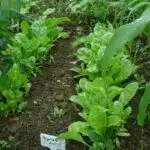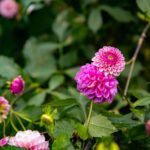Growing stonecrop (Sedum) in pots is an excellent way to add a touch of greenery to your living space. Stonecrops belong to the family Crassulaceae and are known for their low maintenance and drought-tolerant nature, making them ideal for container gardening. With a wide range of varieties available, stonecrops offer an endless combination of textures and colors to choose from, making them a popular choice among horticulture enthusiasts.
When it comes to growing stonecrop in pots, there are several factors that need to be considered. From selecting the right potting mix to providing adequate sunlight and water, every step plays a crucial role in ensuring the plant’s healthy growth. In this article, we will explore the essentials of growing stonecrop in pots and provide expert tips on how to care for these plants. Whether you’re a seasoned gardener or new to the world of horticulture, this guide will help you create a beautiful and thriving stonecrop container garden that will bring joy and beauty into your life.
Understanding Stonecrop Varieties
When it comes to growing stonecrop in pots, it is important to start by understanding the different types of stonecrop available. There are over 400 different varieties of stonecrop, each with unique characteristics that make them suitable for various purposes. Some varieties of stonecrop are better suited for outdoor gardening, while others can thrive indoors.
Growing stonecrop indoors requires a specific set of conditions to be met. For example, the plant needs plenty of sunlight and well-draining soil in order to grow properly. Additionally, indoor gardeners may need to supplement their plants with artificial light or fertilizers in order to ensure proper growth.
When it comes to choosing the right variety of stonecrop for your indoor garden, there are a few factors to consider. Some varieties are better suited for smaller pots while others require more space to grow. Additionally, some varieties may be more resistant to pests or disease than others. By taking these factors into account, you can choose a variety that is well-suited for your specific indoor gardening needs. Moving forward, let’s explore how to choose the right pot and potting mix for your stonecrop plant.
Choosing The Right Pot And Potting Mix
Understanding the different stonecrop varieties is essential in choosing the right one for your potting needs. There are over 400 species of sedums, each with unique characteristics and requirements. Some sedums thrive in full sun, while others prefer partial shade. Some grow tall and upright, while others spread low to the ground. By knowing which variety is best suited for your specific growing conditions, you can ensure a healthy and thriving plant.
Once you have chosen the perfect stonecrop variety for your potting needs, it’s time to select the right pot and potting mix. When decorating pots, it’s easy to get caught up in aesthetics rather than functionality. However, it is crucial to choose a pot that provides adequate drainage to prevent root rot. A pot with drainage holes allows excess water to escape from the soil, preventing it from pooling at the bottom of the container where roots can become waterlogged and eventually die off.
When selecting a potting mix for your stonecrop, look for one specifically designed for succulents or cacti. These mixes are formulated with materials such as perlite or sand that promote drainage and prevent soil compaction. Avoid using regular garden soil or heavy composts as these retain too much moisture and can suffocate roots. With proper pot selection and a well-draining mix, your stonecrop will have optimal growing conditions and be well on its way to reaching its full potential.
To ensure adequate drainage in your pots, consider elevating them on feet or bricks to allow any excess water to flow out of the drainage holes freely. This simple step can make all the difference in maintaining healthy roots and preventing root rot in your stonecrop plants.
Providing Adequate Drainage
When growing stonecrop (sedum) in pots, it is important to use a proper potting mix that allows for adequate drainage. A well draining mix should be made up of a combination of organic material such as peat or compost and inorganic material such as perlite or vermiculite. Watering practices should be adjusted to account for the high drainage of these materials. As such, it is recommended to water less frequently but deeply to ensure the soil does not become waterlogged.
Proper Potting Mix
Achieving optimal growth for your stonecrop plants heavily relies on the quality of soil you use. A potting mix that drains well is crucial to ensure your sedums are healthy and thriving. Proper drainage is essential as it prevents water from accumulating in the pot, which can lead to root rot, mold, and other fungal diseases. As a horticulture expert in growing stonecrop in pots, I recommend using a potting mix with low pH levels and high organic matter content.
When selecting a potting mix for your stonecrop plants, consider the pH levels of the soil. The ideal pH range for sedum plants is between 6.0 and 7.0. This range allows the plant to absorb nutrients efficiently while avoiding any deficiencies or toxicities caused by imbalanced soil pH levels. Additionally, organic matter plays an essential role in promoting proper drainage by enhancing soil structure and water retention capacity.
To ensure adequate drainage for your stonecrop plants, look for a potting mix with high organic matter content such as peat moss, composted bark or coconut coir. These materials create air pockets within the soil that allow excess water to drain freely while holding enough moisture to keep the roots hydrated. As a horticulture specialist, I recommend mixing equal parts of perlite or coarse sand into your potting mix to further enhance drainage and prevent compaction.
In conclusion, providing adequate drainage is crucial when growing stonecrop plants in pots. Using a potting mix with low pH levels and high organic matter content helps promote healthy growth by preventing overwatering and root rot. Investing in proper soil preparation will give you lush green foliage and vibrant blooms that will delight any gardener’s heart!
Watering Practices
A crucial aspect of providing adequate drainage for your stonecrop plants is implementing proper watering practices. The frequency at which you water your sedums depends on various factors, including the pot size, soil type, and weather conditions. As a horticulture specialist in growing stonecrop in pots, I recommend checking the soil moisture levels before watering to avoid overwatering or underwatering.
To determine if your sedum plant needs watering, stick your finger about an inch deep into the soil. If it feels dry to the touch, it’s time to water. However, if it still feels moist, hold off on watering for a few more days until the topsoil dries out. Overwatering can lead to root rot and other fungal diseases that can damage or kill your plants.
When watering your stonecrop plants, aim to saturate the potting mix evenly without allowing excess water to accumulate in the pot’s bottom. It’s best to use a watering can or hose with a nozzle that provides gentle pressure to avoid disturbing the plant’s roots or compacting the soil. Additionally, ensure that you water early in the morning or late in the afternoon when temperatures are cooler and evaporation rates are lower. Overall, proper watering practices play a critical role in maintaining healthy stonecrop plants in pots.
Watering Techniques For Stonecrop
Deep watering is essential when growing stonecrop in pots. Water should be applied until it reaches the bottom of the pot, ensuring that all roots receive moisture. This also helps prevent buildup of salts and minerals in the soil due to shallow watering. Deep watering should be done once a week during summer months to ensure that the plant receives enough moisture.
Watering frequency for stonecrop depends on several factors such as temperature, humidity, and size of the pot. During hotter weather or when temperatures reach above 90°F, plants may require more frequent watering than usual. However, overwatering can lead to root rot and other diseases. It is important to check soil moisture levels before watering the plant again. One way to do this is by sticking your finger into the soil up to your first knuckle; if it feels dry, water deeply.
Proper watering techniques are crucial for successfully growing stonecrop in pots. Deep watering once a week during summer months ensures that all roots receive adequate moisture while preventing salt buildup in the soil. However, frequency of watering should be adjusted according to weather conditions and size of the pot to avoid overwatering and diseases such as root rot.
Fertilizing Your Stonecrop
Like a well-tuned instrument, the beauty of stonecrop in pots can be amplified with appropriate fertilization. The key is to promote healthy growth without overfeeding. Organic options are preferred since they’re gentle on both plants and the environment. Choose a balanced organic fertilizer with equal amounts of nitrogen, phosphorus, and potassium (NPK). A ratio of 10-10-10 or 5-5-5 is ideal for most sedum cultivars.
The frequency recommendations for fertilizing your stonecrop depend on the type of organic fertilizer used. Slow-release fertilizers that release nutrients gradually can be applied once at the beginning of the growing season. Liquid fertilizers need to be applied more frequently, usually every two weeks during the growing season from spring to early fall. Keep in mind that overfertilization can lead to excessive growth and weak stems, which may cause them to flop over.
With proper fertilization, your stonecrop will flourish and reward you with vibrant colors and attractive foliage. However, it’s important to remember that pruning and propagating are also essential maintenance practices in promoting healthy growth for your sedum plants. In the next section, we’ll discuss these techniques in detail so you can create a stunning display of stonecrop in your pots.
Pruning And Propagating Stonecrop
Pruning techniques for stonecrop in pots should include removing dead, damaged or diseased stems, as well as thinning out the plant to achieve desired shape and size. Propagation methods for stonecrop in pots include stem cuttings, division and leaf cuttings. Soil requirements for stonecrop in pots should be well-draining, with a neutral pH and adequate organic matter content. Fertilization should be done in moderation and watering should be done only when the soil is dry. Winter protection should be provided for stonecrop in colder climates to prevent frost damage. Overall, stonecrop in pots is a low-maintenance plant, as long as adequate pruning, propagation, soil and winter protection methods are implemented.
Pruning Techniques
As a horticulture specialist in growing stonecrop (sedum) in pots, pruning is an essential technique to maintain the plant’s health and prolong its lifespan. The benefits of pruning your sedum are numerous, such as improving the plant’s appearance by removing dead or damaged parts, promoting new growth, and preventing diseases from spreading. Pruning also encourages the production of more flowers during blooming season, making your sedum more attractive.
To prune your sedum effectively, you will need the right tools for the job. A pair of sharp pruning shears is necessary to make clean cuts that won’t damage the healthy parts of the plant. You may also need gloves to protect your hands from thorns or prickly leaves. Before starting, inspect your sedum carefully and decide which branches or stems need trimming. Remember to cut just above a leaf node or bud to encourage new growth.
There are several techniques for pruning your sedum depending on its size and shape. If you have a small sedum plant in a pot, pinch off dead leaves and stems regularly to keep it neat and tidy. For larger plants, use selective pruning to remove any damaged or diseased parts first before cutting back up to one-third of the remaining branches. By following these tips on pruning techniques, you can ensure that your stonecrop (sedum) thrives in its pot for years to come without taking up too much space on your balcony or patio.
Propagation Methods
Pruning is not the only method you can use to propagate your stonecrop (sedum). Propagation is the process of creating new plants from existing ones, and there are several ways to do this. One of the easiest and most common propagation methods for sedums is through leaf cuttings. Leaf cuttings involve taking a healthy leaf from your sedum plant, removing its bottom part, and placing it in a container with soil. With proper care, the cutting will develop roots and grow into a new plant.
Another propagation technique for sedums is division. This method involves splitting an established plant into two or more parts by carefully removing it from its pot or garden bed and separating the roots. Each section should have enough stems, leaves, and roots to sustain itself when replanted. Division techniques work best on mature sedums that are at least two years old.
When propagating your sedum using either method, make sure to select healthy parent plants with no signs of disease or pests. Use clean tools to avoid introducing any pathogens into the new plants’ environment. Additionally, provide adequate moisture and light to ensure successful propagation. Knowing these propagation methods will help you multiply your sedum collection easily without having to purchase new plants every time you want one for yourself or a friend’s garden.
Soil Requirements
Pruning and propagating stonecrop are essential skills for any horticulture enthusiast, especially those who prefer to grow their plants in pots. However, it is not enough to learn just the cutting or division techniques. Understanding the soil requirements is also crucial in ensuring that your sedums thrive well after propagation. As a horticulture specialist, I recommend using well-draining soil with composting benefits as it provides nutrients and improves soil structure. Sedums prefer a slightly acidic to neutral pH level of 6-7, which can be easily achieved by adding compost or peat moss to the soil.
When planting sedums in pots, make sure they are placed in a container with drainage holes at the bottom and filled with the recommended soil mix. It is crucial to avoid overwatering because sedums are drought-tolerant plants that prefer dry conditions. Watering should only be done when the topsoil feels dry to touch. Moreover, excess water can lead to root rot and other diseases that may stunt plant growth or even kill them.
In conclusion, choosing the right type of soil and maintaining proper watering habits are critical factors for growing healthy sedums after pruning or propagating them. As a gardener who has a subconscious desire for serving others, it is essential to share this knowledge with friends or anyone interested in growing their own stonecrop collection successfully in pots. By doing so, we contribute positively to our environment and help spread awareness about sustainable gardening practices.
Managing Pests And Diseases
Preventing infestations and identifying common diseases are crucial for growing healthy stonecrop in pots. Insects such as aphids, spider mites, and mealybugs can harm the plant by sucking sap and spreading diseases. To prevent infestations, it is essential to keep the plants well-watered but not waterlogged, as these insects thrive in damp conditions. It is also important to avoid overcrowding the pots, which can lead to a buildup of moisture and increase the risk of infestations.
Identifying common diseases is also necessary for maintaining healthy sedum plants in containers. Sedums are susceptible to fungal infections such as powdery mildew and root rot. Powdery mildew appears as white patches on leaves and stems while root rot causes the roots to turn brown or black and die off. To prevent fungal infections, ensure that the soil is well-draining, avoid overwatering, and provide proper air circulation around the plants.
Preventing infestations and identifying common diseases are essential steps in ensuring successful growth of stonecrop in pots. Regular inspection of plants for signs of damage or disease can help identify problems early on before they spread. Maintaining a clean growing environment by removing dead leaves and debris can also reduce the risk of infection or infestation. By following these steps, you can enjoy healthy and beautiful sedum plants in your container garden.
To maximize sunlight exposure for your stonecrop plants grown in pots requires careful positioning of these containers so that they receive at least six hours of direct sunlight each day. Proper drainage is also required since too much water retention increases susceptibility to fungal infections that will ultimately affect sun absorption by your sedum plants!
Maximizing Sunlight Exposure
1.Selecting the right pot for growing stonecrop (sedum) is important to maximize sunlight exposure. The size of the pot should be adequate to accommodate the root system and allow for drainage.
2.When positioning the pot, the stonecrop should be placed in an area that receives the most direct sunlight throughout the day. It is important to ensure there is adequate air circulation around the pot.
3.If possible, it is beneficial to position the pot on a raised surface to expose the plant to as much sunlight as possible.
4.If the pot has to be placed in a shaded area, it is important to ensure that the amount of sunlight exposure is not drastically reduced.
Choosing The Right Pots
When it comes to maximizing sunlight exposure for growing stonecrop (sedum) in pots, choosing the right pots is crucial. As a horticulture specialist, I highly recommend considering size considerations and decorative options when selecting your pots. The size of your pot will determine the amount of soil available for your plant’s roots to grow and absorb nutrients. It’s important to select a pot that is proportional to the size of your plant, as well as one that allows enough space for drainage.
Decorative options are also important to consider when choosing the right pots for growing stonecrop in pots. While function should always come first, there are many options available that can add style and beauty to your outdoor space. When selecting decorative pots, it’s important to ensure they still provide adequate drainage and are made from materials that will not deteriorate quickly under weather conditions.
In conclusion, selecting the right pots for growing stonecrop in pots requires careful consideration of both size considerations and decorative options. By keeping these factors in mind, you’ll be able to create an environment that maximizes sunlight exposure while adding beauty and style to your outdoor space. Remember that plants thrive best when their needs are met, so take the time to choose the perfect pot for your stonecrop plant.
Positioning The Pots
Pot placement is another crucial factor to consider when maximizing sunlight exposure for growing stonecrop in pots. The position of your pots in relation to the sun’s orientation can make a huge difference in the plant’s growth and overall health. It’s important to place your pots in areas where they will receive ample sunlight, but not too much direct heat that can scorch the plant. Additionally, consider placing your pots in areas with good air circulation to prevent stagnant air from causing mold or fungus growth.
When positioning your pots, it’s essential to take into account the orientation of the sunlight throughout the day. Placing your pots facing east or west will ensure they receive optimal sunlight exposure during morning and afternoon hours. On the other hand, if you live in a particularly sunny area, it may be beneficial to place your pots facing north or south to shield them from intense midday heat. By strategically positioning your pots, you can ensure that your stonecrop plants get just the right amount of sunlight exposure at all times.
Overall, pot placement plays a vital role in maximizing sunlight exposure for growing stonecrop in pots. By choosing strategic locations for your plants and taking into account sun orientation throughout the day, you can create an environment that promotes healthy growth and beautiful blooms. Remember that each plant has its unique needs, so adjust pot placement as necessary based on individual plant characteristics and environmental factors.
Overwintering Stonecrop In Pots
Maximizing sunlight exposure is crucial in the growth of stonecrop in pots. However, as fall approaches and temperatures start to drop, protective measures must be taken to ensure the survival of this plant during winter. Winter care for stonecrop in pots requires attention to detail and proper planning.
To prepare your stonecrop for winter, make sure it has ample water and nutrients going into the dormant season. This will help it survive until spring when it can resume growth. As temperatures start to drop, move the pot to an area with less direct sunlight and protect it from frost by covering with a blanket or burlap sack. It’s also important to monitor soil moisture levels during winter, as too much or too little water can cause damage.
When spring arrives, remove any dead foliage or stems from the previous year and give your stonecrop fresh soil and fertilizer. It’s also a good idea to check for any signs of pests or disease before resuming regular care. By taking these winter care steps, you can ensure that your stonecrop will thrive once again come springtime.
As important as it is to care for your stonecrop during winter months, combining it with other plants in container gardens can add a new dimension of beauty and interest. Stonecrop pairs well with grasses such as feather reed grass or blue fescue, which provide contrasting textures and colors. Other plants that complement stonecrop include sedges, heucheras, and daylilies. By experimenting with different combinations of plants in your container garden, you can create stunning displays that are both functional and aesthetically pleasing.
Combining Stonecrop With Other Plants In Container Gardens
The art of container gardening is not just limited to growing plants in pots. It also involves creating an aesthetically pleasing display by combining different plants that complement each other. Stonecrop, also known as sedum, is a versatile plant that can be easily paired with other plants to create a stunning container garden.
When designing container gardens with stonecrop, one should consider the color scheme and texture of the companion plants. For example, combining stonecrop with succulents such as echeveria or haworthia can create a beautiful contrast of colors and textures. Additionally, pairing stonecrop with herbs like thyme or sage can add both visual interest and practicality to the container garden.
Another factor to consider when selecting companion plants for stonecrop is their growth habits. Plants that have similar water and light requirements will thrive together in the same pot. Moreover, choosing plants that grow at different heights can create an interesting visual effect in the container garden.
In conclusion, designing container gardens with stonecrop requires careful consideration of color scheme, texture, and growth habits of companion plants. By following these guidelines, you can create a beautiful display that will not only serve as a feast for the eyes but also provide practical benefits such as fresh herbs for cooking. Remember to choose companion plants wisely and experiment with different combinations until you find one that suits your style and preferences.
Conclusion
Stonecrop, also known as sedum, is an easy-to-grow succulent that makes a great addition to any container garden. With its wide range of varieties and colors, there’s sure to be a stonecrop that fits your style and growing conditions. When growing stonecrop in pots, it’s important to choose the right pot and potting mix, provide adequate drainage, water appropriately, fertilize regularly, manage pests and diseases, maximize sunlight exposure, and overwinter carefully.
By understanding these key factors and following best practices for growing stonecrop in pots, you can create stunning container gardens that showcase the beauty and resilience of this versatile plant. Whether you’re a seasoned gardener or just starting out with container gardening, growing stonecrop is an excellent choice for adding color and texture to your outdoor spaces. So why not give it a try today? Your plants will thank you!
Image Credits
- “File:Biting stonecrop close 800.jpg” by Sannse (featured)

